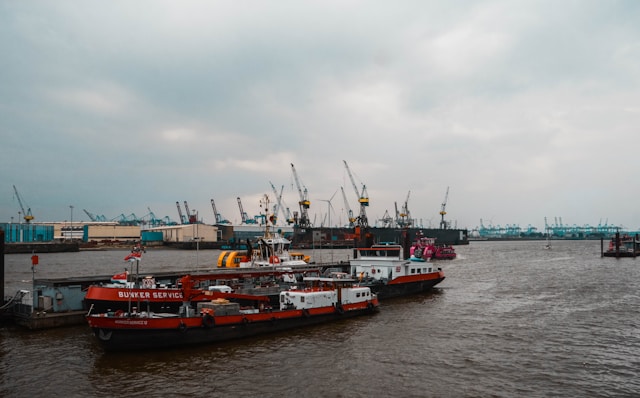
Marine construction has become an essential component of global infrastructure development. From ports and offshore energy platforms to submerged tunnels and coastal defenses, the demand for building on and under water continues to rise. In extreme environments—characterized by freezing temperatures, high winds, corrosive saltwater, seismic activity, or massive waves—marine construction evolves from complex to monumental.
These challenging conditions require more than just heavy-duty equipment. They call for advanced engineering solutions, climate-resilient materials, and sustainable building practices. This article dives deep into how the marine construction industry is tackling the toughest environmental obstacles to build safer, stronger, and smarter.
Understanding the Harsh Marine Environment
Marine construction is unique in that it must accommodate the dynamic and often violent behavior of ocean systems. Extreme environments can be found in polar regions, tropical cyclone zones, deep-sea locations, and earthquake-prone coastal areas. Each presents a unique combination of challenges:
- High salinity and corrosion eat away at steel and concrete.
- Tidal forces and strong currents make construction timing and stability critical.
- Freezing waters and ice movement can crush or dislodge structural elements.
- High winds and wave impact can delay construction and stress materials over time.
Marine construction in such areas must also meet regulatory and environmental standards, especially as projects grow near ecologically sensitive zones. Habitat protection, noise mitigation, and sediment control are now standard project components.
Technological Advancements Empowering Marine Construction
Progress in marine construction has been driven by a combination of innovation, experience, and necessity. Several key advancements allow builders to take on projects once thought impossible.
1. Prefabricated and Modular Marine Components
Constructing elements offsite allows for higher quality control and faster assembly once transported to the site. In marine construction, this means precast concrete caissons, steel trusses, or entire bridge spans can be delivered and installed rapidly during optimal weather windows.
2. High-Performance and Corrosion-Resistant Materials
Ultra-high-performance concrete (UHPC), fiber-reinforced polymers, and specialty coatings are now standard in marine construction. These materials resist saltwater, reduce maintenance needs, and increase longevity even in turbulent waters.
3. Real-Time Monitoring and AI Systems
Sensors now track temperature, current, vibration, pressure, and salinity in real-time. Data feeds AI models that adjust construction schedules and recommend design reinforcements based on environmental fluctuations.
4. Dynamic Positioning and Robotics
In deep-sea or mobile operations like offshore platform construction, vessels use dynamic positioning systems to stay fixed without anchors. Remotely operated vehicles (ROVs) and underwater drones can inspect or assist with construction activities at great depths or in dangerous zones.
Case Studies: Marine Construction in Action
Several landmark projects exemplify the success of marine construction in extreme environments.
Øresund Bridge and Tunnel (Denmark–Sweden)
Spanning the Øresund Strait, this structure combines a cable-stayed bridge, artificial island, and underwater tunnel. It was engineered to withstand strong currents, heavy shipping traffic, and wind shear—all while minimizing disruption to the marine ecosystem.
Sakhalin Offshore Platforms (Russia)
Located in subarctic waters, these oil platforms were constructed to endure drifting sea ice, sub-zero temperatures, and extreme wave heights. Reinforced structures and insulated systems ensure year-round operation.
Hong Kong–Zhuhai–Macau Bridge (China)
This 55-kilometer link includes undersea tunnels, artificial islands, and storm-resilient designs. The region’s typhoon-prone waters and deep channels required marine construction teams to innovate with floating platforms and earthquake-resistant materials.
Floating LNG Terminals (Various Locations)
Floating Liquefied Natural Gas (FLNG) facilities are constructed to be mobile, scalable, and environmentally compliant. These facilities demonstrate how marine construction is shifting toward modularity and adaptability in unpredictable seas.
Sustainable Marine Construction for a Resilient Future
Sustainability is no longer a luxury in marine construction—it’s a mandate. The push for eco-friendly engineering has given rise to new practices that reduce the environmental footprint of underwater and coastal development.
Eco-Conscious Materials and Methods
Eco-concrete promotes marine biodiversity by allowing coral and algae to attach to surfaces. Some marine construction projects now include artificial reefs and eco-pile jackets that restore habitats while reinforcing structures.
Floating Infrastructure
As sea levels rise, floating construction—like modular homes, solar platforms, or data centers—is gaining traction. These projects combine marine construction techniques with renewable energy systems and climate-smart planning.
Climate Adaptation in Design
Modern marine construction incorporates sea-level rise projections, changing storm frequencies, and melting permafrost into design calculations. Flexible foundations, elevated platforms, and adaptive anchoring systems future-proof these builds.
Environmental Monitoring and Transparency
Construction zones now include real-time water quality monitoring and acoustic controls to reduce impact on marine mammals. Transparent reporting and adherence to environmental guidelines ensure that marine construction aligns with global sustainability goals.
Where Engineering Meets Ocean Resilience
Marine construction in extreme environments is about more than simply building in difficult locations—it’s about overcoming adversity through engineering ingenuity. The rise of smart technology, sustainable materials, and adaptive designs is pushing marine construction into a new era.
From Arctic platforms to floating bridges and resilient coastlines, marine construction is critical to expanding infrastructure without compromising ecological balance. As demand rises for offshore energy, secure ports, and coastal protection, the industry’s future will rely on its ability to innovate safely in harmony with nature.
By investing in cutting-edge solutions and respecting the complexities of the marine environment, engineers are showing that even in the most extreme conditions, sustainable progress is possible—one bold structure at a time.